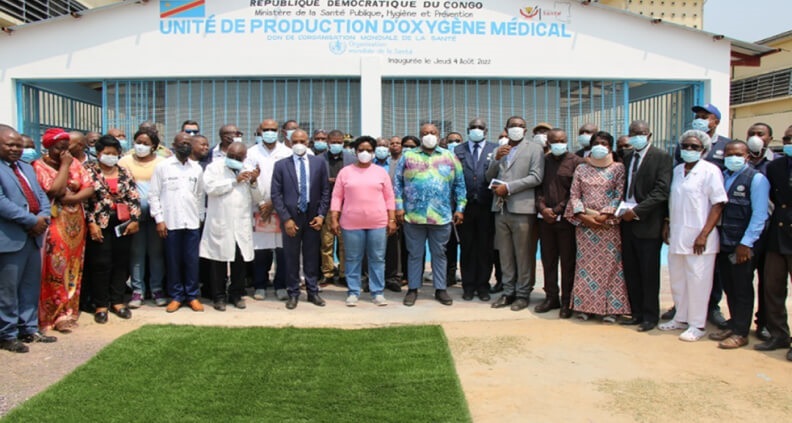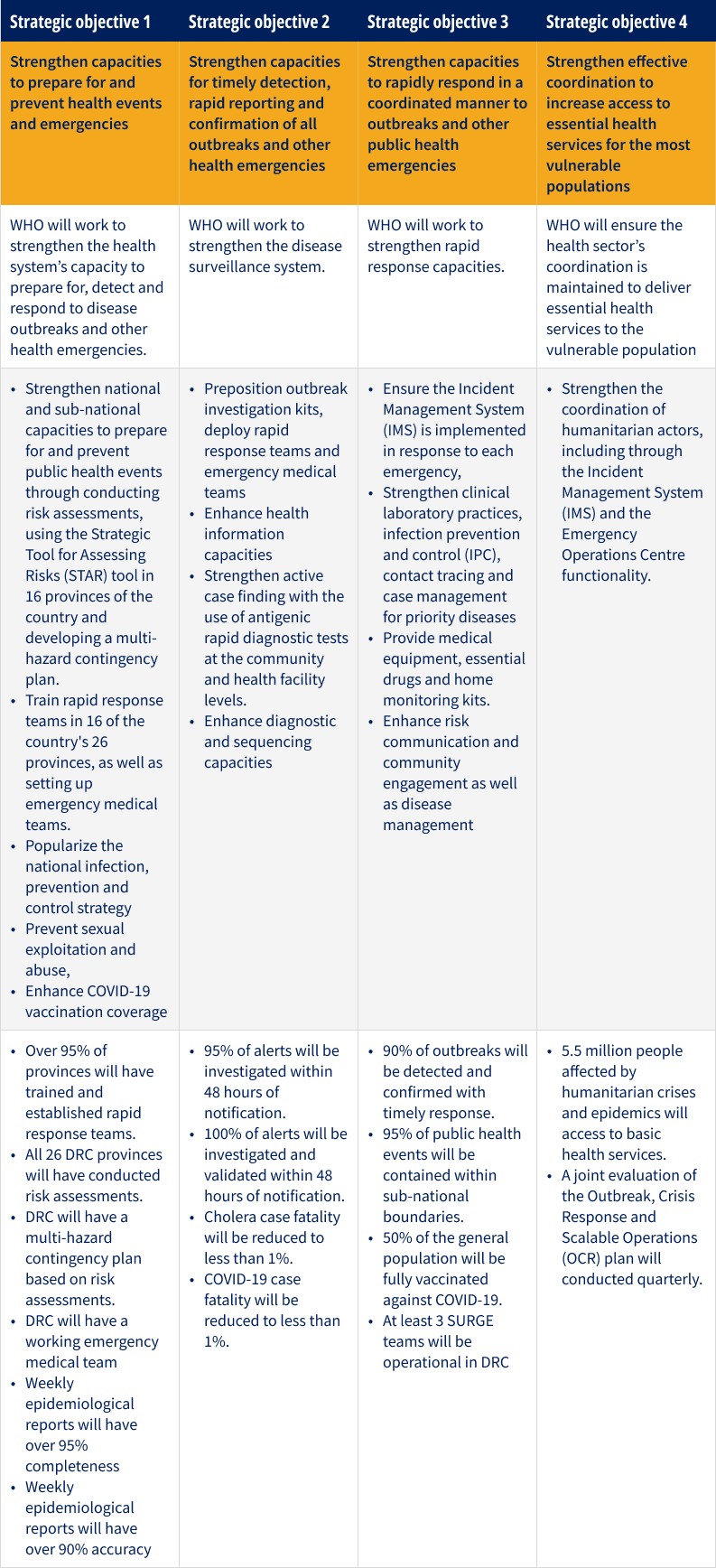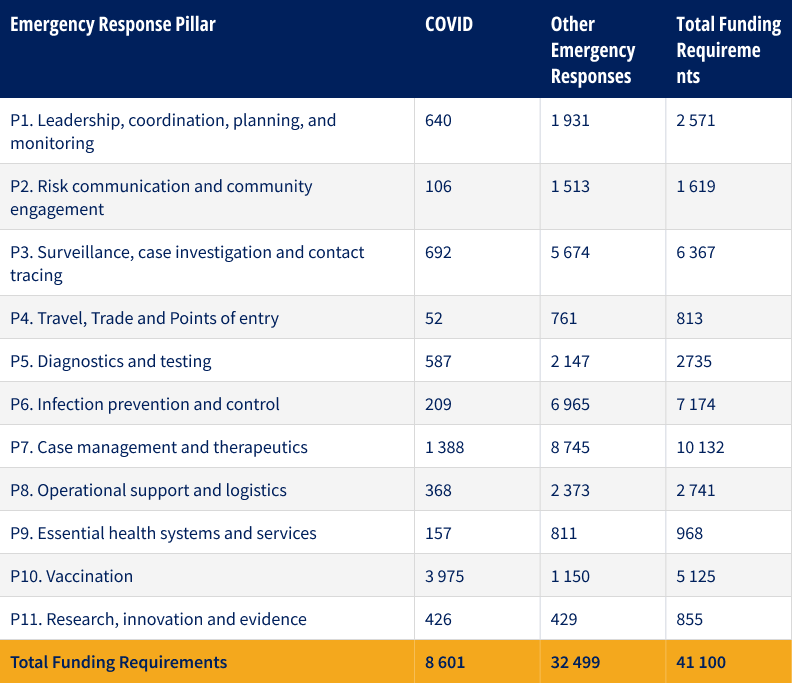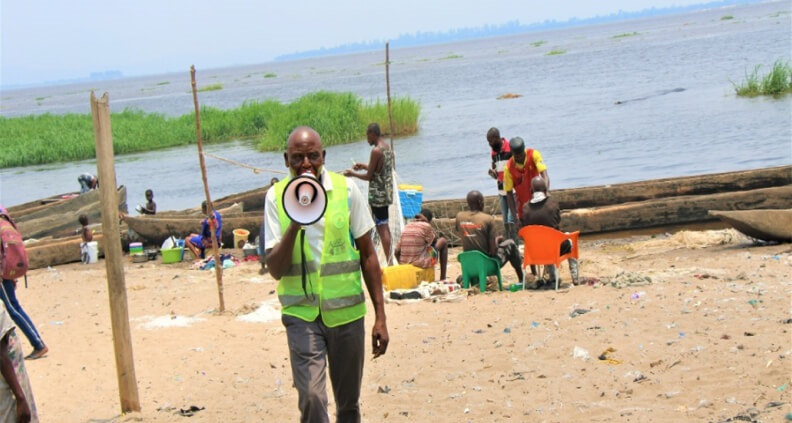
Democratic Republic of the Congo
Democratic Republic of the Congo, Grade 3 Emergency
- People in need: 26.4 million1
- People targeted: 10 million
- Requirements (US$): 41.1 million
Context
Over the past years, several epidemic outbreaks have occurred in the DRC, notably cholera, Ebola disease caused by Sudan virus, polio, measles, mpox and COVID-19. Vaccination coverage against COVID-19 in the DRC is one of the lowest in the WHO African Region. To prepare for and prevent the spread of the Ebola disease outbreak declared in bordering Uganda into the country, the DRC is implementing strengthening surveillance at points of entry. Efforts are also ongoing to curb the current outbreak of mpox and cholera.
In addition, the DRC is facing a humanitarian crisis linked to the health consequences of the Nyiragongo volcanic eruption and to the fighting between the regular army and rebel groups, which have led to massive population displacement. A total of 5.7 million civilians have been displaced, which is the highest number of displaced persons in Africa. This complex humanitarian crisis in the DRC leaves 26.4 million people in need of emergency humanitarian assistance, 10.3 million of whom are targeted and 5.5 million of whom require emergency health assistance. This situation is also leading to an increase in various health problems, such as sexual violence and mental health conditions.
This situation is further straining a fragile health system that is overburdened and heavily dependent financially on religious denominations, nongovernmental organizations and the UN, as a result of poor government spending. Strikes by public health care providers, the volatile security situation in the eastern provinces (Ituri, North and South Kivu) with attacks on health care facilities, workers, transport and patients, inadequate road infrastructure in some provinces and the lack of essential medicines for basic and emergency care are further complicating the situation.

Inauguration by the Minister of Health of the oxygen production unit installed by WHO at the University Clinics of Kinshasa.
Response strategy
To ensure that all three levels of WHO (country office, regional office and headquarters) provide adequate support to the response to this humanitarian crisis, interventions will continue to be implemented in accordance with the WHO emergency response framework. This response will also be aligned with WHO's 13th General Programme of Work, the WHO-DRC cooperation strategy and the DRC humanitarian plan, all aimed at reducing excess morbidity and mortality from diseases with epidemic potential and those related to the health consequences of humanitarian crises and health insecurity, as well as improving access to quality essential health services for vulnerable populations in DRC. Efforts will be further strengthened by the Transforming African Surveillance Systems (TASS) and Strengthening and Utilizing Response Groups for Emergencies (SURGE) initiatives, which are projects set up by WHO/AFRO, that aim to ensure the rapid detection of health events in order to bolster emergency health interventions while preventing the interruption of essential health services and reducing morbidity and mortality.
To achieve the strategic objectives, WHO and other partners will support the DRC’s Ministry of Public Health, Hygiene and Prevention to strengthen the health response’s coordination at national and sub-national levels.
WHO and partners will continue to support the country to scale up and sustain infection prevention and control, surveillance and investigation of infectious diseases, point of entry surveillance and genomic surveillance, as well as to strengthen disease detection by providing sample collection kits, rapid antigenic diagnostic tests and medical and psychological care.
The health information system will be strengthened to generate reliable data in real-time and risk communication and community engagement intensified.
Investments made over the years in terms of the construction of health facilities, donation of medical materials and equipment and rolling stock will be used to build a resilient health system.
Strategic objectives


Key activities
The objective of the national response plan for COVID-19 in the DRC is to reduce mortality and morbidity related to COVID-19 in all its forms by helping to interrupt transmission and minimize the health and socio-economic impact throughout the country. WHO will:
- Continue to support the IMS put in place by the government, as well as the emergency operations center
- Ensure that all guidelines and protocols are put in place and disseminated to facilitate COVID-19 response efforts
- Strengthen surveillance capacities for COVID-19 in communities and health facilities through active search and contact tracing, focusing on high-risk settings and points of entry (PoE) at national and sub-national levels.
- Strengthen diagnosis and screening capacities
- Strengthen genomic surveillance
- Strengthen infection prevention and control activities
- Strengthen at-home and medical care in hospitals of patients followed at home and in the facilities, through the supply of drugs (Tocilizumab), home monitoring kits, medical equipment for intensive care and the use of oxygen production units
- Continue polio response
- Strengthen risk communication and commitment as well as the management of infodemics
- Ensure that COVID-19 vaccines are accessible to all those who need them by using available global, regional and national mechanisms and removing barriers to access through relevant strategies (organization of mass immunization campaigns, community engagement)
Funding requirements
Overall country funding requirements, including COVID-19, by pillar (US$’000)


Success stories
Oxygen production units saving lives in Kinshasa
The installation of oxygen units in major health care centers in Kinshasa has helped transform the management of patients requiring oxygen. The DRC has seen five waves of COVID-19, of which the first three were very deadly. One of the main causes identified was insufficient access to pure oxygen in most of the health care institutions of the country, and more particularly in the provincial city of Kinshasa, the epicenter of the epidemic. The donation of the units by the WHO has not only supported the management of COVID-19 patients, but people facing other illnesses.
WHO, with the support of its donors, set up the project to install two oxygen production units in Kinshasa, at the University Clinics of Kinshasa and the Sinocongolese Friendship Hospital. Each unit has a production capacity of nearly 88 bottles of oxygen per day with a purity of 96%.
This project, a first in the city of Kinshasa and more particularly in these two health care institutions, has strengthened, to the great satisfaction of the DRC government, the health care system and has contributed to the management of other pathologies.

Raising awareness of the population of the city and province of Kinshasa on vaccination against COVID-19 and vaccine preventable diseases.
For more information
Dr DJIGUIMDE, Amédée Prosper | OIC, WHO Office DRC| djiguimdea@who.int
Dr DIALLO, Amadou Mouctar | TL ai EPR/WHE, WHO Office DRC | diallom@who.int

